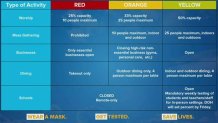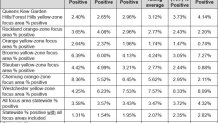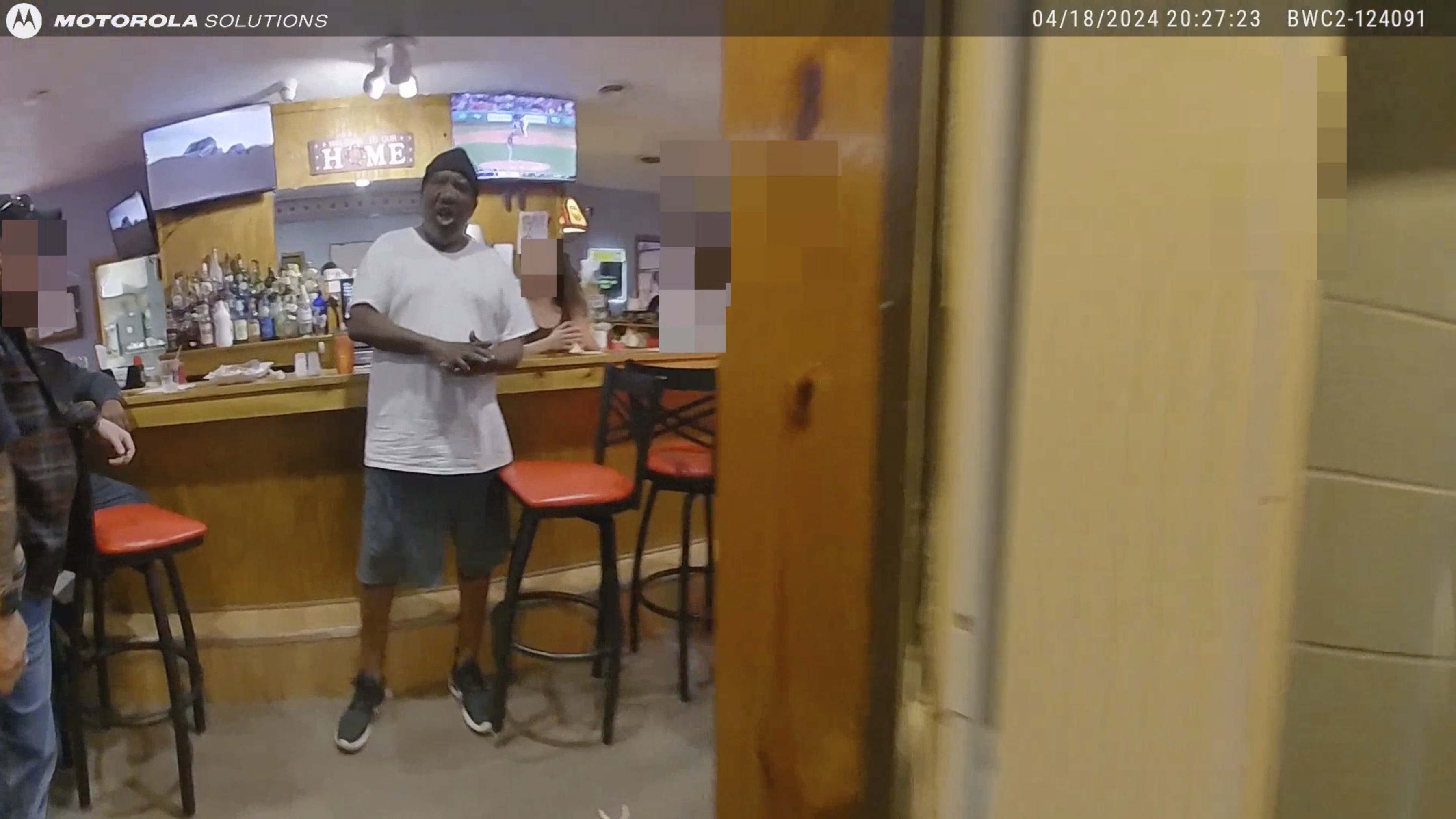What to Know
- New Jersey Gov. Phil Murphy announced new COVID restrictions Monday targeting bars, restaurants and indoor youth sports following a viral surge that has seen daily cases rise to early May numbers
- New York City's mayor for weeks has expressed mounting concern over the numbers; on Monday, he said, "We're seeing things we haven't seen in a long time -- and we have to stop them"
- Gov. Andrew Cuomo warned Monday the next two months could be some of the worst the country has seen as cases continue to spiral; he told New Yorkers the numbers will continue to go up locally
New Jersey unveiled a slate of new indoor COVID restrictions Monday, while New York established three new micro-cluster zones upstate as the governors of both states seek to beat back the biggest viral increases they've seen in months.
Starting Thursday, bar seating will be banned completely in New Jersey, while bars and restaurants must halt indoor service from 10 p.m. to 5 a.m. daily; that includes casinos, though gaming can continue around the clock. Outdoor dining and takeout aren't affected, and there will still be a 25 percent capacity rule in effect. Restaurants will be permitted to place tables closer together than 6 feet, but only if they're separated by barriers, Murphy announced.
Interstate indoor youth sports games and tournaments up to and including the high school level are also prohibited as of Thursday, the governor said. That ban does not apply to college sports, however.
Get Philly local news, weather forecasts, sports and entertainment stories to your inbox. Sign up for NBC Philadelphia newsletters.
Murphy had set the stage for imminent restrictions late last week, when he blasted the state's soaring positivity rate as "unacceptable." He noted the restrictions announced Monday did not reflect a new lockdown, but a surgical approach that he hopes will mitigate the current increasing rate of spread.
"The last thing any of us want to do is shut our economy back down and thankfully we are not at that point. No one wants to take the kind of broad and encompassing actions we had to take in March," Murphy said.
U.S. & World
Stories that affect your life across the U.S. and around the world.
He didn't outline a potential end date for the new restrictions but noted New Jerseyeans need to try to fight back their COVID fatigue for a few more months until there is an effective and widely available vaccine. He urged them to cling to the mindset that helped drive down the state's infection rate at the crisis' peak.
"This is not forever and always. We basically have a six-month window to beat the fatigue back and beat the virus into the ground," Murphy said. "This virus hasn’t gone away, and it is posing its greatest threat to us in months."
"The good news is that a vaccine is on the horizon -- we anticipate broad distribution by this spring," he added. "We have a plan ready should that timeframe hold. Let's get through the remainder of this fall and winter together."
Republicans in the state rejected the governor’s new order, as one state senator called it unjustified.
"This is just another random edict from a governor who continues to fight the pandemic without the benefit of logic or science," state Sen. Joe Pennacchio said in an emailed statement. "Is the governor suggesting diners are more susceptible to the virus later in the night?"
Marilou Halvorsen, president and CEO of the New Jersey Restaurant and Hospitality Association, characterized the new guidelines as the latest example of restaurants being unfairly targeted while restrictions at other businesses, such as big-box stores, are less draconian.
Had she been consulted, she said, she would have urged a more targeted approach than penalizing the whole industry.
"I appreciate the fact that the governor and the health commissioner are concerned about the spike," Halvorsen said. "But we’re the ones that get the black mark. To do something just to do it, doesn’t make sense."
The moves come as New Jersey has seen its COVID hospitalizations triple in two months. They hit 1,537 Monday, the highest total since June 9 and surpass New York's growing total. More than 300 COVID patients are in intensive care for the first time since mid-June. Daily cases have soared to highs not seen since early May. Murphy has reported six straight days of 2,000-plus positives; that hasn't happened since April. His state now has confirmed well over a quarter million.
New Jersey's health commissioner says most of the new cases are not easily traced back to a single exposure and are likely related to routine gatherings in private homes. Last week, she urged New Jerseyeans to wear masks even when with their own families -- an urgent plea to avoid further community spread.
It may not improve significantly soon without aggressive action. In New York, Gov. Andrew Cuomo warned Sunday the next two months could be some of the worst the country has seen, with numbers spiraling worldwide as colder weather looms.
"COVID is surging across the country and the globe, and we expect the rates will continue to go up through the fall and into the winter," Cuomo said in a press release. "In the meantime, we manage the increase by doing more testing and targeted restrictions where necessary, and being more aggressive on enforcement."
The local metrics continue to rise across the board, too. More than 3,000 new COVID cases were announced in New York for the second straight day Monday, a tally that illustrates the state's tenuous hold on the progress it made reigning in the virus over this summer. New York has averaged nearly 3,000 new infections per day during the past seven days, up 83 percent in two weeks.
Total hospitalizations are at their highest level since June 16 (1,444 as of Monday) and increasing daily. The daily death toll has moved from the low single digits to the low double digits to a recent high of 26 Monday. While that's mercifully below the 800 New Yorkers who were dying a day in April, it's a disconcerting trend for those acutely monitoring the numbers.
"As I think it is clear to all, we have definitely entered a new phase with COVID," Cuomo said.
Daily Percentage of Positive Tests by New York Region
Gov. Andrew Cuomo breaks the state into 10 regions for testing purposes and tracks positivity rates to identify potential hotspots. Here's the latest tracking data by region and for the five boroughs. For the latest county-level results statewide, click here
Source: ny.gov
Cuomo has said weddings, birthdays and other private gatherings have fueled the spread, on top of universities and schools opening their doors. In that vein, the governor said Friday that all SUNY schools would be halting in-person learning after Thanksgiving, in an effort to try and contain the spread, and "exit testing" will be conducted for students before they leave for the break. He may apply the same policy to private schools in the state but was not yet prepared to do so Friday.
New York has also suspended the liquor license for North Fork Country Club on Long Island for hosting a 113-person wedding on Oct. 17 that violated gathering restrictions and led to at least 34 coronavirus infections, said Cuomo.
Club officials didn’t immediately respond to a phone message on Monday.
"Hosting one of these events after all New York has been through is obnoxious and irresponsible — not to mention illegal," Cuomo said.
The governor also said he would enhance National Guard presence at New York airports ahead of the holidays to ensure compliance with his new COVID entry test policy (more details on that here). He has touted the effectiveness of his micro-cluster strategy in lowering hotspot viral rates and announced Monday that the Brooklyn red zone would lift, meaning no total shutdown, and the area, which he downsized by half last week, will transition to an orange zone. That keeps schools all-remote but loosens restrictions on nonessential businesses.

On the other end of the spectrum, Cuomo outlined a micro-cluster approach to some upstate counties, which have seen their numbers trend worse and faster than the ones in New York City, the former U.S. crisis epicenter. Parts of Erie, Onandago and Monroe counties will be transitioned to a yellow zone risk level, which mandates weekly randomized testing of students and staff but no harsh shutdown. Last week, Cuomo established a yellow zone in Port Chester as well, where schools have gone all-remote.
"This is going to be the constant for the foreseeable future. People are tired, I get it," he said of the latest round of restrictions. "But the virus isn't getting tired. And that's all that matters."
The positive testing rate in the focus areas of the state under the micro-cluster strategy is at 4.32 percent, substantially higher than the other areas' 2.69 percent.

While New York City's numbers have been better than much of the rest of the state as of late, as Cuomo has noted, its population is both bigger and denser than other regions, meaning community spread could lead to a much faster downward spiral. For weeks now Mayor Bill de Blasio has expressed growing concern over the city's daily case averages, which topped 600 three days last week for the first time in months and ended last week with a report of more than 700 new cases. On Monday, that shot up to 779, well above the mayor's threshold.
"We have to do everything in our power to stop the coronavirus from reasserting in New York City," de Blasio said Monday. "We have to stop a second wave from happening here. It is getting dangerously close. We're seeing a real growth in the positivity rate in this city and that is dangerous. We can stop a second wave if we act immediately, but we have one last chance -- and everyone has to be a part of it. We have to act urgently. We have gone well past the threshold."
"We're seeing household transmission. We're seeing community spread. We're seeing things we haven't seen in a long time -- and we have to stop them," he said, noting that there has been no specific superspreader event that has triggered the spike. "The key problem here is indoors and not wearing masks. Let's really emphasize that."
De Blasio has said two Staten Island ZIP codes have become particular points of concern in recent weeks. He scheduled a Staten Island Day of Action Tuesday, during which volunteers will distribute face coverings, testing information and health messaging. They'll focus on the Staten Island ferry and shopping areas.
Cuomo said later Monday the state is watching the numbers on Staten Island and notes the concern, but said the state didn't plan additional actions at this time. Tottenville has the highest positivity rate there; it was 6.57 percent over a rolling seven-day basis the week of 10/31-11/6, nearly three times higher than the city's.
The seven-day rolling positivity rate, which de Blasio has described as the "most objective measure" of the city's standing, has ticked up too -- and is now above the 2 percent threshold (2.21 percent) he set to consider pausing indoor dining. The health department released a new data page Monday tracking rolling positivity rates to a ZIP code level to give New Yorkers more detailed information.
While the mayor said he would reassess dine-in given the trends, he noted any change would be the call of the state. He said he's been in touch with Cuomo. While he deferred repeat questions about a timeline for potential new overarching restrictions to state authority, de Blasio said it was crucial to point out the risk.
"It is important to lay out the danger in terms of new restrictions. It will make it very real to people what we're up against. God forbid this continued and we had a full-blown second wave, it means a lot more restrictions," the mayor added.
De Blasio did reiterate that a 3 percent rolling positivity rate would be exceedingly problematic; that brings up the issue of keeping schools open. The mayor said that should the city's rolling positivity rate hit that number, it'd signify the five boroughs were in the throes of a full-on second wave of the pandemic.
For his part, Cuomo says he's been more concerned by numbers upstate than downstate lately. The rolling positivity average in western New York has climbed to 3.8 percent; the Finger Lakes are also seeing a rate above 3 percent. As of the latest report, the statewide positivity average, which enjoyed a rate below 1 percent for nearly 40 straight days over the summer, has climbed above 2 percent -- high by local standards but still remarkably low compared with the country.
The U.S. surge, which has left no state untouched, has also moved Connecticut's governor to reinstate some capacity and business restrictions in recent days. Echoing the pleas of other tri-state governors to avoid holiday travel if possible and limit gathering sizes regardless, Gov. Ned Lamont asked Connecticut residents to keep Thanksgiving celebrations to 10 people or less. He hopes limiting the size of even private family gatherings will limit community spread.
Hospitalizations in that state are just shy of 500, a total not seen since late May, a number Lamont said had doubled in the past few weeks. The statewide positivity rate sits at 3.7 percent as of Monday.
The recent tri-state struggles reflect an alarming trend across the country, which broke its own single-day case record four times in four days last week. The U.S. has now topped 10 million cases, by far the highest total of any nation in the world, and reported more than 239,000 deaths, according to NBC News.
It took only 10 days for the U.S. to go from nine million to 10 million cases, Cuomo pointed out. On Monday, the U.S. once again reported a new high in daily cases, topping 130,000 cases for the first time. It marks the sixth straight day the U.S. has recorded more than 100,000 cases in a day, and the ninth nationwide daily case record set since Oct. 22.
"New Yorkers: Wear a mask, social distance and get tested," the governor tweeted Monday. "Numbers don’t lie and we need to all do our part to stop the spread."
Overall, the tri-states' positivity rates remain well below the national average. New York vacillates between the second-, third- or fourth-lowest in the nation; some states seeing rampant virus spread have positivity rates more than 30 times higher, according to the Johns Hopkins University Coronavirus Resource Center.
With President-elect Joe Biden announcing a team of experts on Monday to get started on controlling the raging pandemic, Cuomo expressed his worry that things will worsen before the Biden administration takes office in January.
"The fall season has brought the COVID increase that all the scientists predicted. The numbers are undeniable. We expect the rates will continue to go up through the fall and into the winter," Cuomo said Monday. "The best you can do is manage the increase. But it will be increasing. This is going to be the same thing all fall, all winter -- it's going to be the same conversation."
"The long-term prognosis is get to a vaccine as quickly as possible, administer the vaccine as quickly as possible, administer the vaccine fairly and equitably, which is a whole different conversation," he added.
Pfizer and BioNTech offered some promising news on the path to a vaccine Monday, saying theirs was more than 90 percent effective in preventing COVID-19 among those without evidence of prior infection. Stocks soared on the news.
“I think we can see light at the end of the tunnel,” Pfizer Chairman and CEO Dr. Albert Bourla told CNBC’s Meg Tirell on “Squawk Box.” “I believe this is likely the most significant medical advance in the last 100 years, if you count the impact this will have in public health, global economy.”
John Burkhardt, Pfizer's Senior Vice President of Global Drug Safety Research and Development who is the director of the company's lab in Connecticut, said that "with this particular vaccine, no corners were cut."



